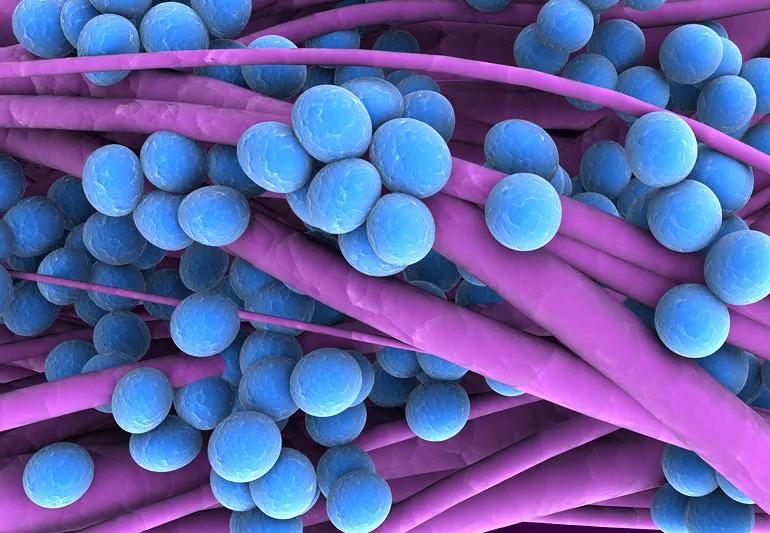Signs and symptoms of staph and MRSA infections

The bacteria that causes a staph infection, staphylococcus aureus, is all around you all the time. It lives on surfaces and on the ground. You might also carry it on your skin and in your nose. So how does it go from harmless companion to troublesome foe?
Advertisement
Cleveland Clinic is a non-profit academic medical center. Advertising on our site helps support our mission. We do not endorse non-Cleveland Clinic products or services. Policy
“Typically, we get along with staphylococcus just fine,” says family medicine physician Donald Ford, MD, MBA. But when staph enters your body through a nick or cut in your skin, it may result in an infection.
These infections are usually minor and can be treated with antibiotics. Staph can become much more serious, though — even life-threatening — if it somehow finds its way into your bloodstream, lungs, bones, joints or heart.
A staph infection might show up on your skin as:
Advertisement
Most staph infections on the skin are easy to treat and typically respond well to antibiotics or by draining the infected area, Dr. Ford says.
“We treat more superficial skin infections such as impetigo for a few days,” he says. “A deeper boil or an abscess may need to be drained and can take up to a few weeks to heal.”
If staph moves deeper into your body, it becomes dangerous and may require a longer course of treatment — or even hospitalization.
Serious forms of a staph infection include:
Some staph bacteria have become resistant to the antibiotics used to treat them. This is known as MRSA, which stands for methicillin-resistant staphylococcus aureus.
Most MRSA infections are skin infections, but it can also cause more serious infections. The infected wound may require surgical or local drainage. Your doctor likely will prescribe a stronger antibiotic to treat it as well.
Since staph is all around us, it’s not uncommon for a perfectly healthy person to get a staph infection. The best way to avoid it is to maintain good hygiene, Dr. Ford says.
If you think you have a staph infection, Dr. Ford suggests bringing it to your doctor’s attention or going to an emergency care center.
“Staph is sometimes a serious infection if left untreated. So it’s always a good idea to go see your doctor or another health care provider if you’re worried you might have a staph infection,” Dr. Ford says.
Advertisement
Learn more about our editorial process.
Advertisement

Practicing good hygiene is your best defense

It could be from dry skin, bacteria or ingrown hairs

Act quickly to cut your infection risk

Bleeding is a risk and warrants taking care, but the reward of this lifesaving medication is great

Severe and debilitating headaches can affect the quality of your child’s life

Type 2 diabetes isn’t inevitable with these dietary changes

Applying a hot or cold compress can help with pain